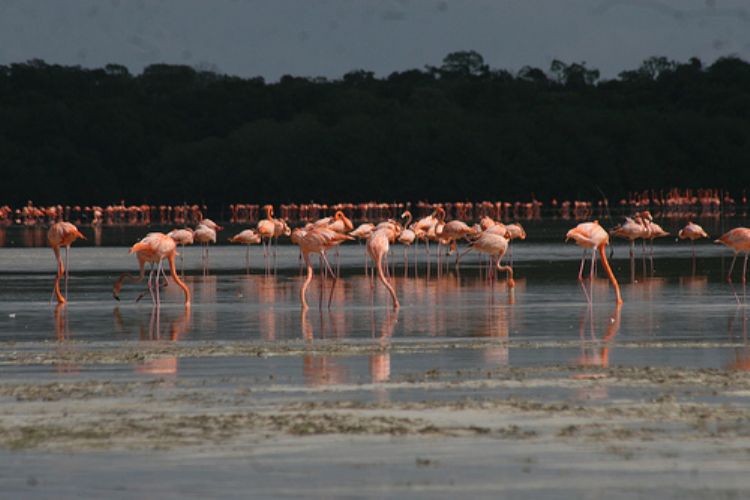MarÃa Félix, Great Mexican Actress

María de los Ángeles Félix Güereña was born on April 8, 1914 in Alamos, Sonora. Her beauty reflected an interesting genetic mix; she was the daughter of Bernardo Felix, a descendant of yaqui Indians and Josefina Güereña, of Spanish origin. She was the actress renowned as Mexicoâs great diva and one of the most important figures of Mexican cinemaâs golden years.
She had eleven siblings: Josefina, María de la Paz, Pablo, Bernardo, Miguel, María Mercedes, Fernando, Victoria Eugenia, Ricardo, Benjamín and María del Sacramento. She had a very close relationship with her brother Pablo, her mother suspected it could become incestuous, so he was sent to a military school to keep him away from Maria; soon after, he died of a supposed suicide.
Maria was educated at a convent in United States, Pico Heights in California. This refined education didnât limit Maria from practicing activities considered inappropriate for a lady of her time; for example, she enjoyed horseback riding.
To break free from the strong discipline imposed by her father, Maria married very young to Enrique Alvarez in 1931, marriage that ended in divorce in 1938, after having her only child, Enrique Alvarez Felix.
She traveled to Mexico City where she met Fernando Palacios, who invited her to participate in cinema. In her first film she shared the leading role with Jorge Negrete, in El Peñón de las animas of 1943, which quickly granted her an unstoppable fame. During that same year she also filmed Maria Eugenia and Doña Barbara, earning her place as the great lady of national cinema. Her nickname La Doña was given to her after filming this last movie.
Venezuelan Romulo Gallegos wrote the novel Doña Bárbara, which he later adapted for film. According to history, when Romulo met Maria at a restaurant he said âThatâs her! Thatâs my Doña Bárbara!â
Ever since filming Doña Barbara it is said that her personality was of such impact that scriptwriters wrote for her, specialists say Maria always performed as herself in all her movies; therefore, her presence on screen is a blend of reality and fiction.
The history of Mexican cinema would not be the same without Maria Felix, her 47 unforgettable movies placed her as the great dame of the golden age. In all her starring roles she broke away from the usual stereotype of a submissive woman, her great personality was imposing.
From 1943 to 1947 she was married to singer and songwriter Agustin Lara, who wrote the song Maria Bonita in her honor.
On October 18, 1952 she married actor Jorge Negrete, unfortunately, he died in 1953.
Maria was married to French millionaire Alex Berger from 1956 to 1974, when he died.
Her most celebrated films were those directed by Emilio Fernández: Enamorada (1946), Río Escondido (1947) and Maclovia (1948). Also outstanding in her career are La mujer sin alma (1943) and La devoradora (1946), directed by Fernando de Fuentes; La diosa arrodillada (1947) and Camelia (1953) directed by Roberto Gavaldón and Doña Diabla (1948) by director Tito Davison. In 1959 she filmed Los ambiciosos directed by Buñuel. Her two most important films outside of Mexico are Mare Nostrum (1948) and La noche del sábado (1950) directed by Rafael Gil and La corona negra (1950) by Argentinean Luis Saslavsky. In Faustina (1956) directed by Jose Luis Saenz de Heredia, she shows her full seductive charm. Her last film appearance was in La Generala (1970).
Some of the recognitions she received throughout her life were Premio Ariel in 1946, 1948 and 1950; Diosa de Plata in acknowledgement for her career in 1986; homage by the National Actors Association for 50 years since her film debut; UNAM medal for her trajectory in 1992; and National Order of the Legion of Honor as Commander of the National Order of Art in 1996.
Mara Fexli died on April 8, 2002 during her sleep, in Mexico City. On the day Mexicoâs Great Diva died, her body was transferred from her residence to the majestic Palacio de Bellas Artes for an immense homage. Hundreds of persons accompanied the funeral cortege escorted by motorbikes. The coffin remained for 22 hours at Bellas Artes, before it was moved to Theater Jorge Negrete for a tribute, actors sang âMaría Bonitaâ for later taking her to the French Cemetery, her final resting place alongside her son Enrique Alvarez Felix and her parents.
Artículo Producido por el Equipo Editorial Explorando México.
Copyright Explorando México, todos los Derechos Reservados.
Foto: Wikipedia.org Ver Licencia y Autor




.jpg)

